Although it’s September, it was more than two weeks ago that I began to feel the change. Something was different. Oh sure, the temperatures were in the eighties for a few days and it felt really, really nice, but that’s not what I mean.
We’ve crossed a line, internal triggers have been tripped, a biological turning point has been reached. The wildlife can feel it, the trees are reacting to it, and I feel it too. It’s not fall but it’s certainly the end of summer. Nesting duties are over for most birds and those birds that rely on invertebrates for food, especially the species from farther north, are migrating. Without a doubt, shorebirds, some warblers, and swallows are on the move. I saw a group of Common Nighthawks working over a field at dusk out near Hillsborough last week and hundreds of Chimney Swifts, swallows of more than one species, and several species of dragonflies were working the air above another rather buggy field a day later. Things are definitely on the move.
The leaves on some of the trees have stopped production and begun to show fall hues. Katydids and grasshoppers are being seen at their full adult size. I expect to see an orb weaver web across the path any day.
Monarchs are slowly cruising through our area and Cloudless Sulphurs are zipping along the field edges looking for Partridge Pea and other sennas on which to lay eggs. Caterpillars of various species are methodically moving about feeding, their frass evident on the paths.
Summer is done. It’s now time to prepare for a new season, fattening up, moving to new environs, or shutting down production, depending upon what you are and how you function. We’ve turned a corner.
Some of what can be seen around the Wetlands and in Catch the Wind are pictured below, mostly insects. There are quite a few images, so kick back, scroll down, and enjoy!
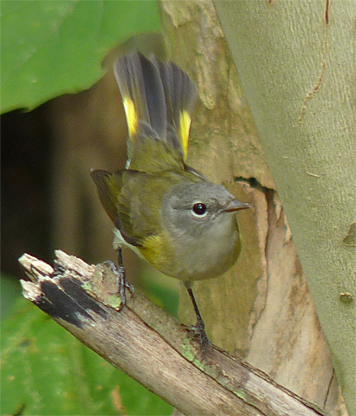
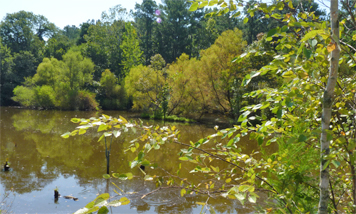
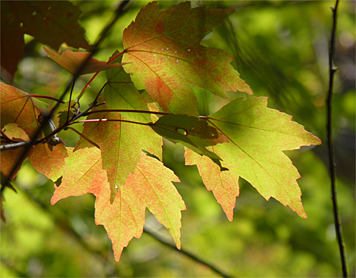
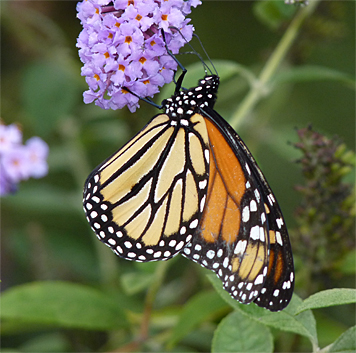
Last week, I was weeding around the small patch of senna, or Partridge Pea, out in Catch the Wind so that Cloudless Sulphurs (Phoebis sennae) could get a clear approach to the plants. Before I could finish the job, one flew in and laid eggs on several of the plants.
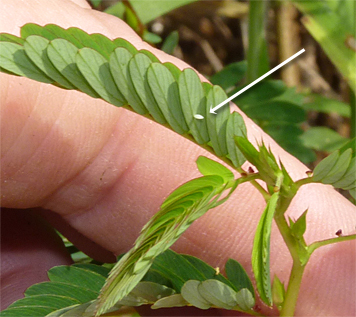
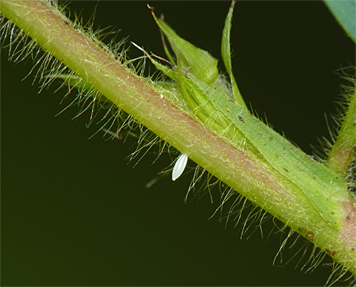
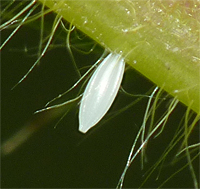
The eggs are tiny, but if you look carefully you may be able to locate a few. Look on the underside of leaves and stems. Good luck.
The caterpillars of these large yellow-green butterflies have been present for several weeks.
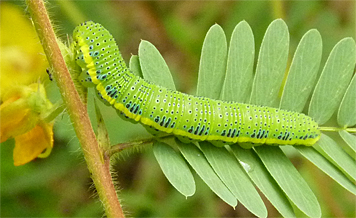
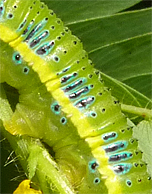
The greenish caterpillars tend to show blue around the black markings on their sides.
Other caterpillars are beginning to make themselves more visible as their frass falls from the trees and shrubs that they’re feeding on.
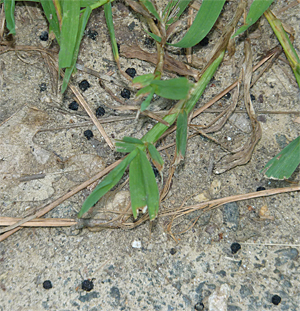
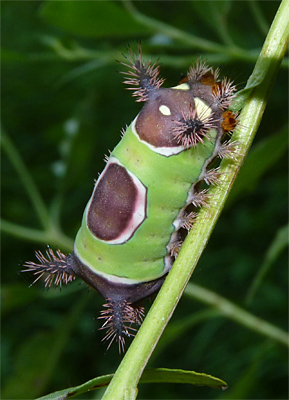
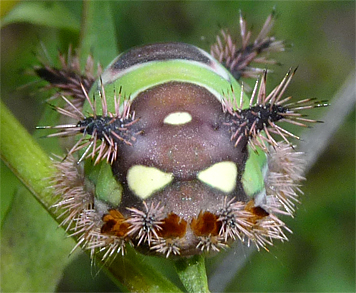
Slug caterpillars are slow moving and small. The Saddleback Caterpillar (Acharia stimulea) pictured is about 30 mm in length. The rear end of the caterpillar has big, scary eye-like spots. Perhaps these spots serve to ward off attacks from the rear. However, considering the amount of stinging spines on their bodies, I doubt that saddlebacks need help in that matter. I’ve read that the sting from the spines are “…the most potent of any North American caterpillar.” I haven’t tested that claim.
Many katydid and grasshopper species hatch out in the spring and early summer, by summer’s end there are usually many adults about, the adults typically signaling their readiness to mate and lay eggs for next year’s generation.
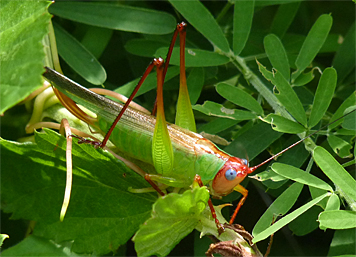
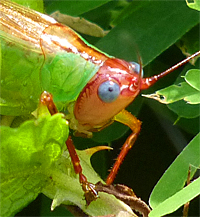
There are several meadow katydid species in our area, but the Handsome Meadow Katydid (Orchelimum pulchellum) is the only one with red head and legs, and blue eyes.
Differential Grasshoppers (Melanoplus differentialis) are large hoppers. They’re fairly common at this time of year.
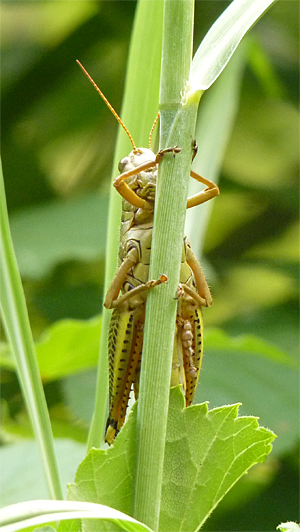
Soldier beetles are swarming over many of the flowers in front of the Butterfly House.
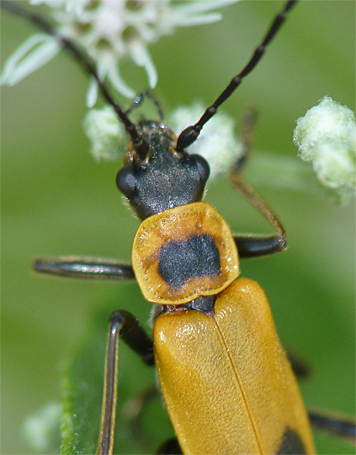
And, amidst all the other activity, flesh flies (Sarcophagidae).
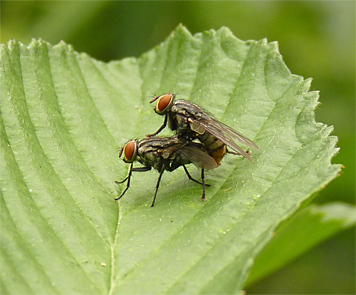
The name Sarcophaga translates to flesh eater. The dae part means family. I’m fairly confident as to the identity of these flies (pictured) at the family level, that they are in the family of flies know as Sarcophagidae. It’s beyond me to place them as to species, or even genus.
Keep you eyes and ears open, there’s lots to see and hear out in the wild!